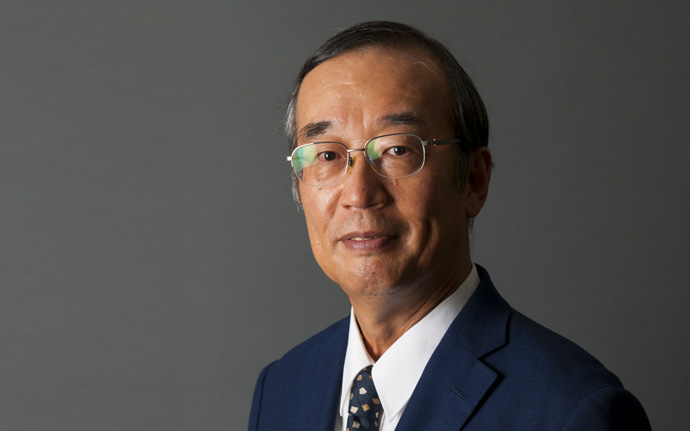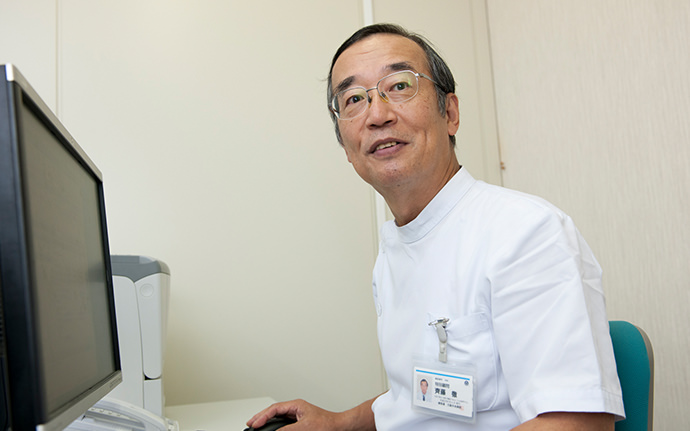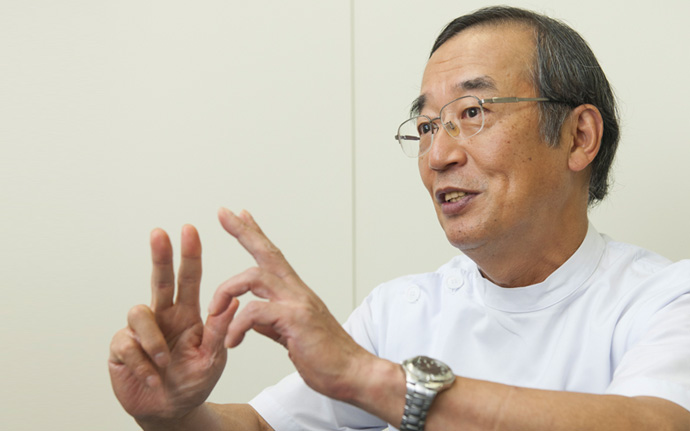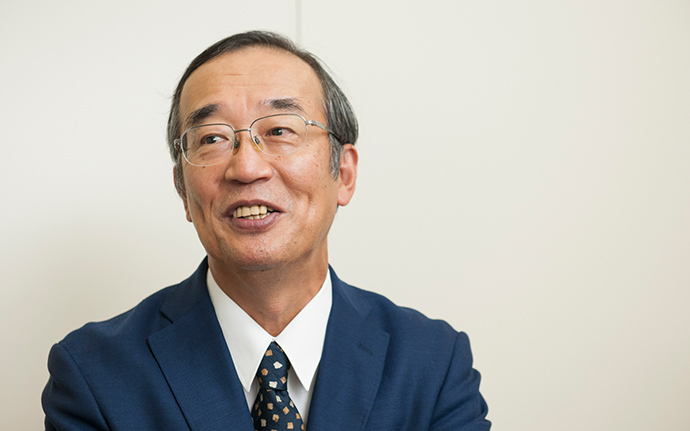
External hemorrhoids (piles formed outside the anus) may cause prolapse as well as symptoms of pain, bleeding, swelling, and pruritus (itching). On the other hand, internal hemorrhoids (piles formed inside the anus) are mainly associated with bleeding or prolapse, causing pain in rare cases. However, severe pain may occur if internal hemorrhoids are accompanied by anal fissure or external thrombosed hemorrhoids (blood clots). Pain caused by external hemorrhoids is often mild and is usually dull pain. Only external thrombosed hemorrhoids cause severe pain. Acute anal fissure pain occurs and persists during defecation. However, in most cases, it resolves spontaneously in 4 to 7 days even if left untreated, and the pain disappears. If painful defecation persists for three weeks or pain persists for several hours after defecation, it is recommended to visit a hospital or clinic because anal fissure may have become deep or chronic.
Bleeding during defecation often occurs due to various causes while bleeding not associated with bowel movements can be caused by diseases such as colorectal cancer which is life-threatening. Therefore, differentiation between hemorrhoids (piles) and colorectal cancer must be made. In such a case, consult a specialist immediately. If unbearable pain is caused by hemorrhoids, an incision must be performed for pus drainage or removal of blood clots. In such a case, consult a specialist. Prolapsed hemorrhoids without bleeding and pain are unlikely to require immediate treatment. However, if prolapsed internal hemorrhoids, which can be cured by early treatment with one injection (sclerotherapy), are left untreated, prolapse will not be cured by injection sclerotherapy, and invasive procedures that cause pain (surgical incision) will be the sole treatment option. There are advantages that patients who visit a hospital early can choose various treatment methods.

The followings can be listed as factors that are obviously associated with hemorrhoids (piles): “sitting on the toilet for a long time,” “frequent bowel movements,” and “frequent sitting on the toilet.” "Straining at stool for a long time" is also one of the factors. People who engage in sedentary work should exercise caution because prolonged sitting may adversely affect anal conditions. However, simply standing up and then sitting down every 20 minutes will reduce pressure on the anal region even if over a period of two hours. This sitting and standing action improves blood flow. It is also effective to warm the anal region in a bath.
Hemorrhoids (piles) are common among patients with constipation, but it has been pointed out that hemorrhoids are not caused by constipation itself but by prolonged sitting on the toilet due to constipation. Anal fissure is caused by various factors, such as constipation and diarrhea. It has been reported that sustained contraction (spasming) of the anal sphincter muscle is one of the causes of anal fissure. A tear in the skin often occurs on the posterior side of the anal canal because blood flow is least around the posterior side. With regard to anal fistula and anal abscess, there are about 12 to 15 holes (anal sacs) from which "rectal mucus" is secreted and which are located 2 cm inside the anus. If contaminants or bacteria enter the hole, inflammation may occur. Diarrhea is considered to be the main cause. "Anal abscess," a condition in which pus accumulates in the perianal region, is alleviated by incision and removal of pus. However, if the inner opening from which rectal mucus is secreted and a fistula tract for pus drainage to the outside remain, this may lead to the clinical condition of anal fistula.

In an era when expertise is required, it is becoming more common for patients to choose to receive treatment at a proctology clinic (proctological surgery/proctology). A diagnosis of anal fistula is established by digital examination in which a finger is inserted into the anal canal to palpate the primary opening located approximately 2 cm inside the anus. Some proctologists do not perform digital examination, but a correct diagnosis cannot be established by such physicians. If a patient knows that "digital examination is to be performed for anal fistula to palpate its internal opening," the patient can judge whether the proctologist is reliable based on the presence or absence of digital examination. Some proctologists prescribe drugs for patients without telling patients the name of their disorders (such proctologists may not have established a diagnosis of an anal disorder). Appropriate drugs cannot be prescribed for patients with unknown disorders. In such a case, it is recommended that the patients confirm the name of the established disorder and feel free to ask the doctor a few questions about any concerns they may have. Proctologists who give patients knowledeable answers and propose various treatment options are reliable.
Internal hemorrhoids are a type of hemorrhoids (piles) that are located in the rectum 2 cm or deeper inside the anal canal. The surrounding tissue is innervated by autonomic nerves, not by sensory nerves, so it does not feel pain. Bleeding internal hemorrhoids that are not prolapsed involves only congestion and erosion on the surface of these hemorrhoids, and such hemorrhoids can be cured with ointments and/or suppositories. However, hemorrhoids which are prolapsed and swollen are difficult to treat with drugs, mostly requiring some surgical procedures, such as injection sclerotherapy and surgical incision. For external hemorrhoids, it is also useful to warm the affected area in a bath because most external hemorrhoids are just swollen, not prolapsed. It is recommended to consult a doctor if anal bleeding persists regardless of the types of hemorrhoids, internal or external hemorrhoids.

The normal frequencies of bowel movements are within the range of once every 3 days to 3 times a day. Defecation once every 3 days may be considered to be constipation but it is medically acceptable. However, defecation once every 3 days may lead to hard stools. It is also important to shorten the duration of sitting on the toilet. Some people continue to sit on the toilet despite having no bowel movement, which can cause problems. During a bowel movement, the perianal region moves to evacuate stools, and the bowels also move to evacuate stools from the rectum. Immediately after the bowel movement, the bowels are still moving, which produces a sustained sensation of urgency to defecate. This is a "sensation of inadequate defecation." Persons who are concerned about such sensation will not be able to leave the toilet. It is important to leave the toilet. Even if there are bowel sounds, leave the toilet. When a sensation of urgency to defecate increases, sit on the toilet again.
To prevent persistent constipation or diarrhea, it is fundamental to eat dietary fibers and a well-balanced diet. Furthermore, attention should be paid to alcohol intake. It is said that hemorrhoids (piles) can worsen with alcohol intake. Some people drink alcohol, saying that alcohol softens stools, allowing them to smoothly pass through the anus. In my opinion, some moderate alcohol intake for smooth defecation is acceptable. It is the same for milk. Some people experience diarrhea after drinking milk; however, for people in whom milk encourages bowel movements, drinking milk is recommended. It is important not to quit drinking alcohol or milk suddenly, and to eat a balanced diet. The frequency of bowel movements and the consistency of stools are indices of regular bowel habits. Keep in mind that the recommended ideal stool consistency is from a toothpaste for loose ones to a banana for hard ones. It is also important to control your bowel movements, checking your stool condition in addition to bowel movement frequency.
